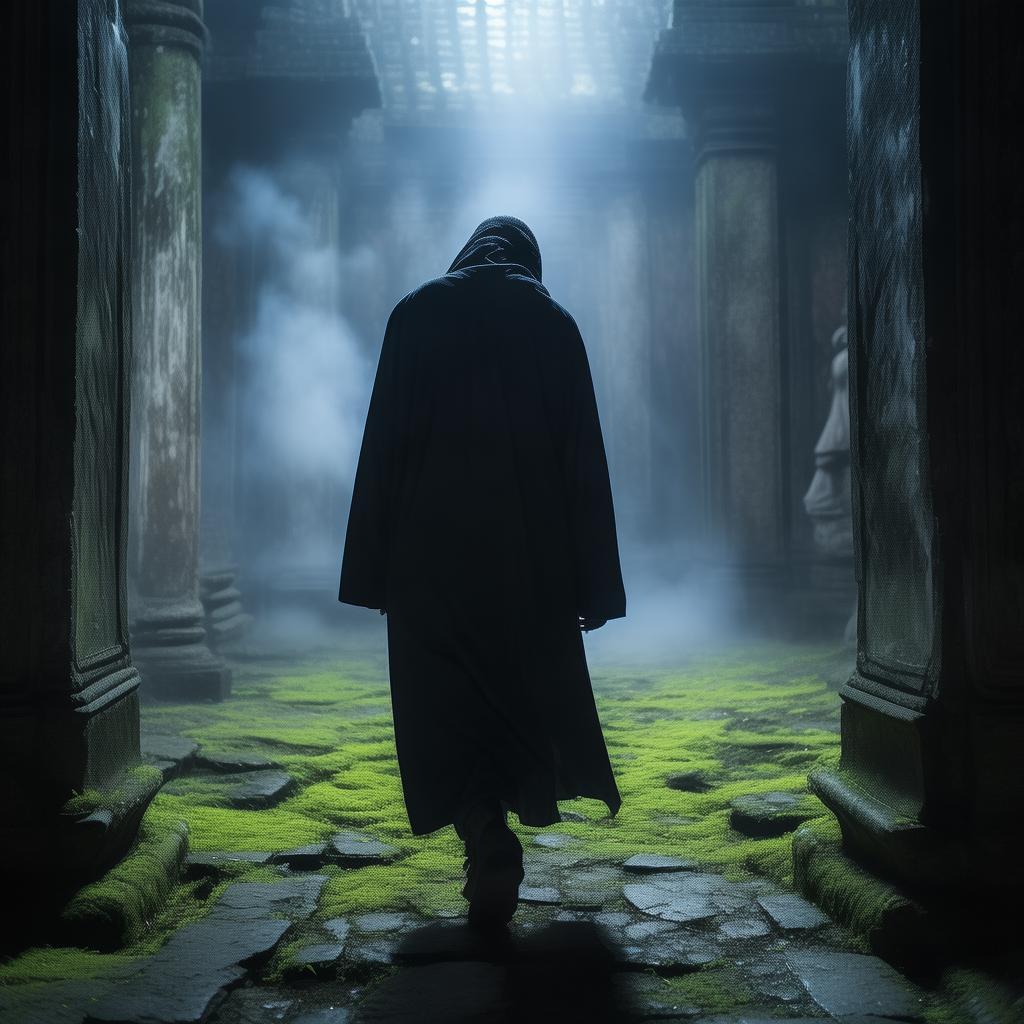The Haunted Heirloom: The Cursed Portrait
In the quaint town of Changning, nestled among rolling hills and whispering woods, there stood an old, ivy-covered mansion that whispered tales of yesteryears. The Liu family had resided there for generations, their lineage intertwined with the very fabric of the town's history. But little did they know, their lives were about to be upended by a haunted heirloom that had been passed down through the ages.
The Liu family was known for their prosperity and their eccentricities. The matriarch, Mrs. Liu, was a woman of great charm and intellect, but also of a superstitious nature. She often spoke of the "haunted heirloom" that had been in the family for centuries, a portrait of an unknown figure that was said to bring misfortune to those who dared to gaze upon it.
The story of the cursed portrait began when the youngest Liu, a young and ambitious architect named Ming, inherited the family mansion. Ming was eager to restore the dilapidated structure to its former glory, hoping to use it as a showcase for his talents. However, as he began to uncover the secrets hidden within the walls, he discovered the portrait that had been kept in the attic, a silent sentinel guarding the family's darkest secrets.
One stormy evening, Ming, driven by curiosity and a desire to understand his family's past, decided to confront the legend of the cursed portrait. He carefully removed it from its frame and brought it down to the living room, where the flickering candlelight cast eerie shadows on the walls.
As Ming gazed upon the portrait, he felt a chill run down his spine. The figure in the portrait was that of a young woman, her eyes piercing and her expression serene yet haunting. He couldn't shake the feeling that she was watching him, her gaze seemingly able to pierce through the canvas and into his soul.
That night, Ming awoke to the sound of whispering voices. He strained his ears, but there was no one there. The next morning, he found that the portrait had been moved back to its original place in the attic. Determined to uncover the truth, he began to research the woman's identity, only to find that she was a figure from the Liu family's past, a woman who had mysteriously vanished without a trace.
As Ming delved deeper into the family's history, he uncovered a web of deceit and betrayal. It seemed that the woman in the portrait had been the victim of a tragic love story, one that had torn the Liu family apart. The portrait, it turned out, was a symbol of the family's unresolved guilt and the curse that had been placed upon them.
Ming's sister, Li, a psychologist, became involved in the investigation, using her expertise to analyze the portrait and the family's behavior. She noticed strange patterns in the portrait's eyes, as if they were trying to communicate something. Li suggested that the portrait might be a vessel for the spirit of the woman, trapped within the canvas and seeking release.
The family's oldest member, Grandpa Liu, who had been suffering from dementia, began to show signs of lucidity. He spoke of a love triangle that had occurred centuries ago, involving his great-grandfather and the woman in the portrait. It seemed that the spirit was trapped within the portrait, unable to move on due to the unresolved emotions of the past.
As the family grappled with the truth, strange occurrences continued to unfold. The portrait would move on its own, and whispers would be heard in the dead of night. Ming and Li worked tirelessly to free the spirit, using ancient rituals and modern science to bridge the gap between the living and the dead.
The climax of the story came when Ming and Li discovered that the portrait was not just a vessel for the spirit, but also a key to unlocking the family's past. They learned that the woman in the portrait had been the ancestor of the Liu family, and that her spirit had been trapped within the canvas due to a tragic betrayal.

In a final, emotional confrontation, Ming and Li managed to free the spirit, who thanked them for their efforts and promised to leave the Liu family in peace. The portrait, now empty of its curse, was returned to its place in the attic, where it would remain, a silent witness to the family's redemption.
The story of the cursed portrait had a profound impact on the Liu family. They learned to confront their past and move forward with a newfound sense of unity and understanding. Ming's restoration of the mansion became a symbol of the family's healing, and the portrait, now free of its curse, became a cherished artifact, a reminder of the family's resilience and the power of forgiveness.
In the end, the haunted heirloom had served its purpose, not as a curse, but as a catalyst for change and growth. The Liu family had faced their demons and emerged stronger, their legacy now one of love, courage, and redemption.
✨ Original Statement ✨
All articles published on this website (including but not limited to text, images, videos, and other content) are original or authorized for reposting and are protected by relevant laws. Without the explicit written permission of this website, no individual or organization may copy, modify, repost, or use the content for commercial purposes.
If you need to quote or cooperate, please contact this site for authorization. We reserve the right to pursue legal responsibility for any unauthorized use.
Hereby declared.









